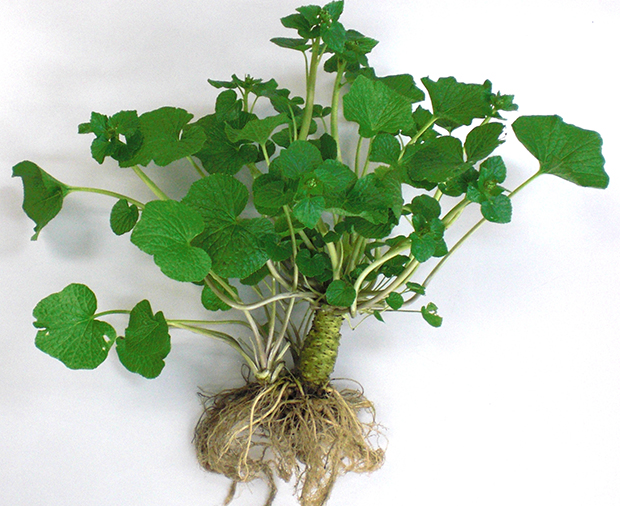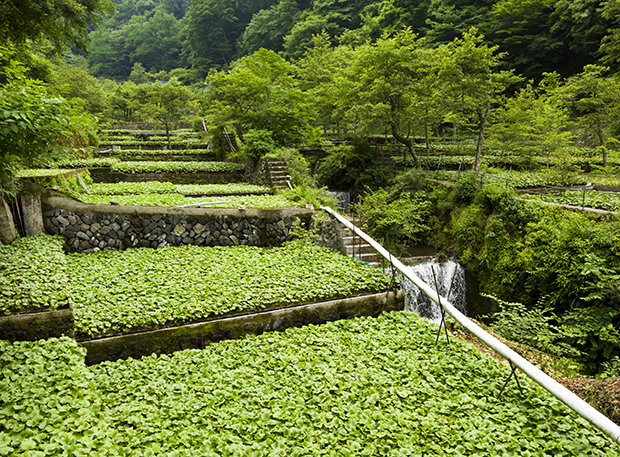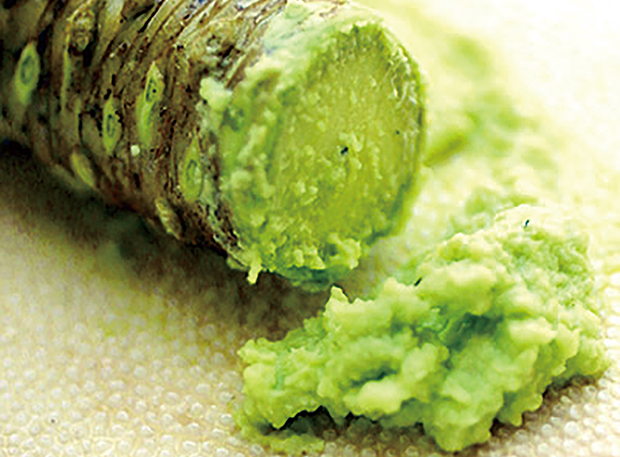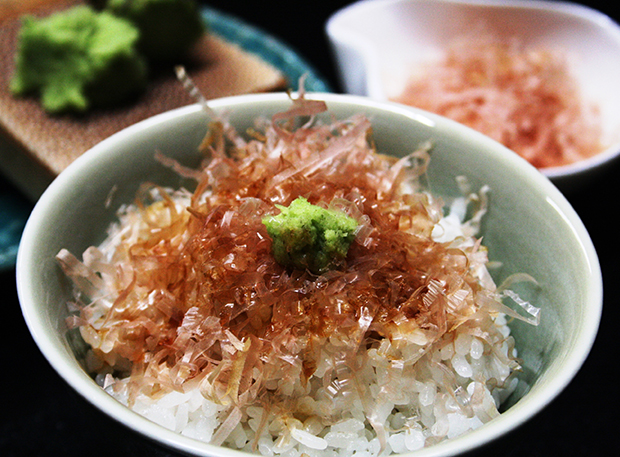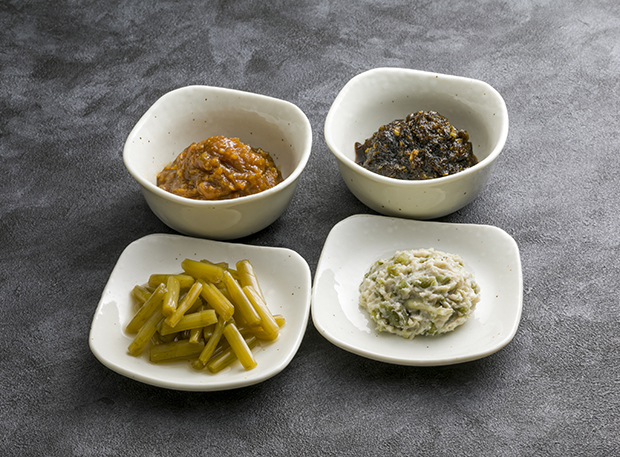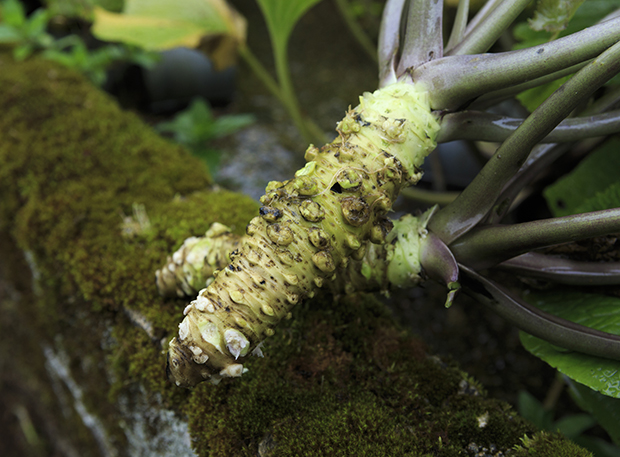Wasabi – The Flavor of Japan
Have you ever taken a bite of sushi and encountered a brisk spiciness that opened up your nose?
That distinctive spiciness is well known to everyone in Japan as wasabi.
When grated, wasabi provides a spiciness that is refreshingly cool, and since ancient times it has been an indispensable condiment for sushi, sashimi, soba noodles and many other traditional Japanese dishes. In recent years its popularity as a cooking ingredient has spread worldwide, finding its way into various meat dishes and other non-Japanese cuisine.


